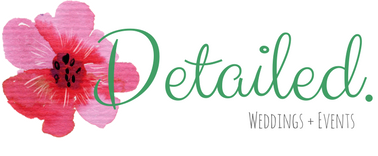How To Identify Toxic Relationship Patterns And Address Them Effectively

Recognizing Toxic Relationship Patterns

Navigating relationships can be complex, and sometimes we find ourselves entangled in patterns that are ultimately detrimental to our well-being. Recognizing toxic relationship dynamics early on is crucial for safeguarding your emotional health and building healthier connections.
Control and Manipulation
Navigating relationships can be complex, and sometimes we find ourselves entangled in patterns that are ultimately detrimental to our well-being. Recognizing toxic relationship dynamics early on is crucial for safeguarding your emotional health and building healthier connections. Toxic relationships often involve a power imbalance where one person seeks control over the other through manipulation and various unhealthy behaviors.
- Control through Isolation: A common tactic is isolating you from friends and family, making you dependent on them.
- Emotional Manipulation: This can involve guilt-tripping, playing the victim, or using threats to make you feel obligated.
- Gaslighting: This involves denying your reality, making you question your own perceptions and sanity.
- Constant Criticism: You may be subjected to constant negativity, put-downs, and belittling remarks that erode your self-esteem.
- Jealousy and Possessiveness: Excessive jealousy can lead to controlling behaviors, restricting your interactions with others.
If you recognize these patterns in your relationship, it’s essential to take action.
Isolation from Support Systems
It’s important to remember that healthy relationships are built on mutual respect, trust, and open communication. You deserve to be treated with kindness and consideration. Don’t hesitate to reach out for support from trusted friends, family members, or a therapist.
Seeking professional guidance can provide you with valuable insights and tools to navigate these challenging situations.
Constant Criticism and Belittling
Constant criticism and belittling are hallmark signs of a toxic relationship. They erode your self-esteem and create a pervasive sense of negativity. This pattern is deliberate, aimed at making you feel inadequate and dependent on the person inflicting the harm.
- Pay Attention to Your Feelings: If you consistently feel belittled, insecure, or anxious after interactions with this person, it’s a red flag.
- Identify Patterns of Behavior: Look for recurring instances of put-downs, sarcasm, or negative comments that target your character, abilities, or appearance.
- Examine Their Motives: Does the criticism seem constructive, or is it designed to control, manipulate, or make you feel inferior?
Remember, you deserve to be treated with respect.
Gaslighting and Denial
Gaslighting is a insidious form of emotional abuse where a person manipulates another into questioning their own sanity and perceptions. It often involves denial, contradiction, and the distortion of reality. The victim may begin to doubt their memories, feelings, and judgment.
- Denial: Gaslighters frequently deny events that happened, making you question your memory.
- Trivialization: They minimize your feelings or experiences, saying things like “You’re overreacting” or “It’s not a big deal.”
- Contradiction: They might contradict your memories or perspectives, leaving you confused and unsure of what is true.
- Shifting Blame: Gaslighters often blame you for their own actions or problems, making you feel responsible for their behavior.
Recognizing gaslighting can be challenging because it often happens gradually. If you find yourself constantly questioning your sanity or feeling like you’re walking on eggshells, it’s important to seek support and validation from trusted sources.
Denial is a common defense mechanism used in toxic relationships. It involves refusing to acknowledge the reality of situations or behaviors that are harmful.
- Ignoring Red Flags: Denial allows individuals to dismiss warning signs or patterns of unhealthy behavior in a relationship.
- Minimizing Harm: They may downplay the severity of their actions or the impact they have on their partners.
- Blaming Others: Instead of taking responsibility for their part in the problem, they may blame external factors or other people for the issues in the relationship.
It’s crucial to remember that denial is a way to protect oneself from confronting uncomfortable truths.
Fear and Walking on Eggshells
Toxic relationships often involve walking on eggshells – a constant state of anxiety and uncertainty where you fear upsetting your partner.
This heightened sense of caution stems from the other person’s unpredictable behavior or tendency to lash out when their needs are not met. You may find yourself constantly analyzing your words and actions, avoiding topics that could trigger a negative response.
- Pay Attention to Your Emotional State: If you consistently feel anxious, stressed, or on edge around your partner, it’s a sign that you might be walking on eggshells.
- Identify Trigger Points: Notice situations or conversations that tend to lead to conflict or criticism.
- Observe Their Reactions: Do they react disproportionately to minor events or comments? Are they quick to anger or resentment?
Walking on eggshells is emotionally draining and prevents you from being your authentic self in the relationship.
Addressing Toxic Patterns
Recognizing toxic patterns in relationships is crucial for protecting your well-being. These patterns often involve manipulation, control, and a disregard for your emotional needs. Understanding the signs of toxicity can empower you to make healthier choices and establish boundaries that safeguard your mental and emotional health.

Self-Reflection and Honest Assessment
Addressing toxic patterns begins with self-reflection and honest assessment. Take time to examine your relationship dynamics, paying attention to recurring behaviors and emotional responses.
Are there consistent patterns of manipulation, control, or disrespect? How do you feel after interactions with this person? If you find yourself feeling drained, anxious, or walking on eggshells, it’s a clear indication that something is amiss.
Being honest with yourself about the dynamics at play is essential for making informed decisions about your relationship.
Remember, recognizing these patterns doesn’t mean you are to blame; rather, it means you have the courage to face the reality of the situation and take steps towards healthier connections.
Setting Boundaries
Setting boundaries is essential for protecting yourself in any relationship, especially those that exhibit toxic patterns. Boundaries define your limits and what behaviors are acceptable to you.
Clearly communicate your boundaries to the other person. Be assertive and direct about your expectations. For example, if you feel uncomfortable with certain topics of conversation, state that clearly.
Enforce your boundaries consistently. If someone crosses a boundary, it’s important to address it immediately. This might involve calmly stating your boundary again or removing yourself from the situation.
Remember that setting boundaries can be challenging, especially if the other person is resistant. However, it is a necessary step towards creating healthier relationships and protecting your well-being.
Be prepared for pushback. Some individuals may not respond well to boundary-setting. They might try to manipulate, guilt-trip, or become angry.
Stay firm in your resolve. Remember that you have the right to set boundaries and protect yourself from harm.

